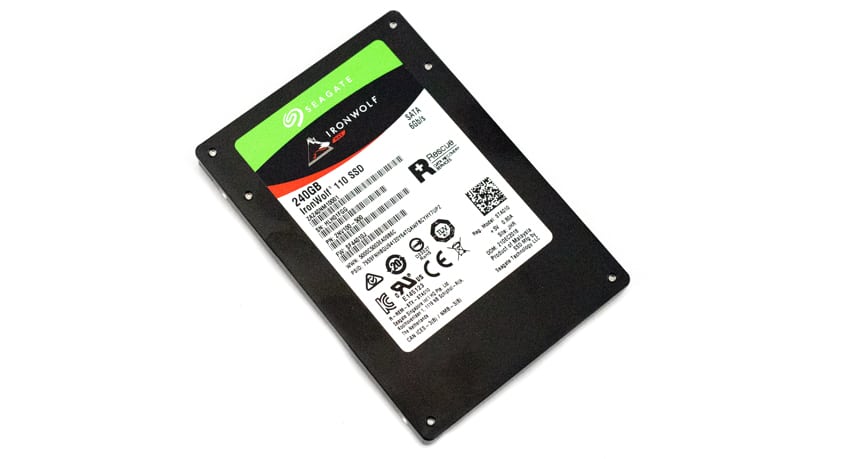I need a 240 GB 2.5" SSD suitable for a boot disk. It will be mirror'd with my old 240 GB Intel SSD DC S3520, and have a small partition for a SLOG.
Does anyone have experience of the Seagate IronWolf 110 SSD? It looks to me to be on product run-out, at just about half the price of a 2.5" Intel DS-S4510 the same size.
This brochure says of the IronWolf 110 "Power is stored in integrated capacitors that immediately supply energy when the power drops below a specific threshold. This emergency supply of energy allows in-flight writes to complete and buffer data to copy to NAND". That seems fairly definitive that it's OK for a SLOG.
The technical specifications suggest it has performance reasonably compatible with it's mirror paired Intel SSD (which is all it has to do).
It looks fit for purpose to me. Any experience with this SSD, or other comments?
Does anyone have experience of the Seagate IronWolf 110 SSD? It looks to me to be on product run-out, at just about half the price of a 2.5" Intel DS-S4510 the same size.
This brochure says of the IronWolf 110 "Power is stored in integrated capacitors that immediately supply energy when the power drops below a specific threshold. This emergency supply of energy allows in-flight writes to complete and buffer data to copy to NAND". That seems fairly definitive that it's OK for a SLOG.
The technical specifications suggest it has performance reasonably compatible with it's mirror paired Intel SSD (which is all it has to do).
It looks fit for purpose to me. Any experience with this SSD, or other comments?


